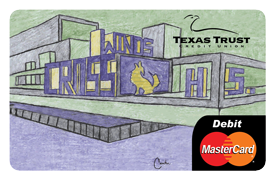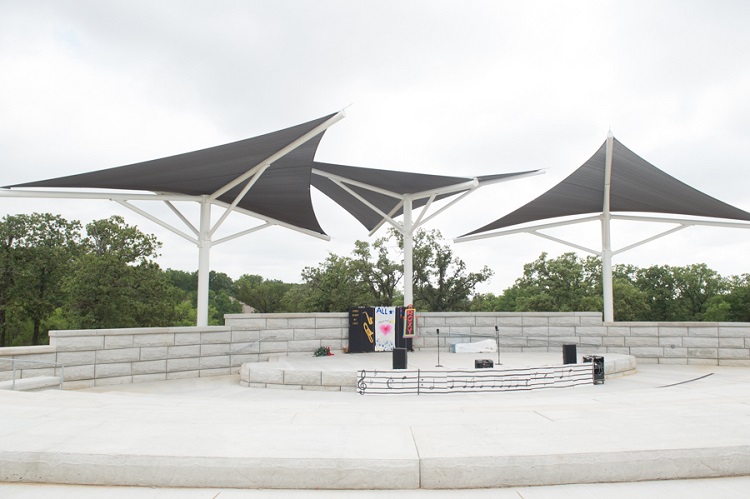Top-Level Takeaways
-
In seven years, Texas Trust has donated more $1.5 million to area schools through its Spirit Debit Rewards program.
-
As of Feb. 28, 2018, Texas Trust has 26,174 active Spirit Rewards cards in circulation.
In the seven years Texas Trust Credit Union ($1.2B, Mansfield, TX) has offered its Spirit Debit Rewards program, which comes standard with any of the institution&’s checking accounts, the credit union has donated $1.5 million to area school districts one dime at a time.

Jim Minge, CEO, Texas Trust Credit Union
The credit union was founded to serve the employees of Chance Vought Aircraft Corporation in Grand Prairie, Texas, and now serves several counties in the nearby Dallas-Forth Worth area. Grand Prairie remains one of the cooperatives oldest and strongest footholds for member relationships. The city is where Texas Trust opened its first branch office and operates one of its three in-school branches.
We started in Grand Prairie and over the years found different partners within that community, including its school district, says credit union CEO Jim Minge. It was the first place we rolled out this program.
Here, Minge talks about giving back to education, branding the credit union, and collecting stories from members.
ContentMiddleAd
Why did you add the Spirit Debit Rewards component to your debit cards? How does the program work?
Jim Minge: There were budget cuts across schools in Texas in 2011. Districts were struggling, and we thought it be great to give back to our schools through member activity. We offer members a branded card with a custom design or mascot of the school or district they support. Every time they use the card for a purchase above $15, we give $0.10 to the school or district they choose.
QUICK FACTS: As of Feb. 28, 2018, Texas Trust has 26,174 active Spirit Rewards cards in circulation and has given $1,576,077.43 to local schools.
Why the $15 threshold?
JM: We instituted that last year. Our interchange on smaller transactions is barely ten cents. We were giving away, in some cases, more than we were earning, or barely breaking even.
We don&’t need to make money on this, but we want to make the program equitable. The limit helps manage the costs of the program.
CU QUICK FACTS
Texas Trust Credit Union
Data as of 12.31.17
HQ: Mansfield, TX
ASSETS: $1.2B
MEMBERS: 114,083
BRANCHES: 20
12-MO SHARE GROWTH: 27.4%
12-MO LOAN GROWTH: 16.9%
ROA: 0.72%
How does a program like this build member loyalty?
JM: It&’s as much about attraction as it is loyalty. The Dallas-Fort Worth market is competitive for financial institutions, and it&’s hard to differentiate. Plus, the advertising spend is expensive. This program is a way for us to affordably differentiate ourselves from our competitors. The school districts do a pretty good job of letting people know the program is out there.
People like to do business in a way where they are giving back to their community, and this is a way for them to do that.
How does it strengthen Texas Trust&’s brand?
JM: Part of our brand is trying to be a force for good in the communities we serve, and through the seven years of this program we&’ve given back more than $1.5 million to local schools. From that perspective, the program shows we are active in the communities we serve, and we care about education.
Our mission is to build better financial futures, and we believe it&’s hard to have a bright financial future if you don&’t have a good education. Most of what we do from a community standpoint and a giveback standpoint is focused on that.
Click the tabs below to view Texas Trust’s student designed cards.
CEDAR HILL ISD STUDENT DESIGNED CARD

CROSSWINDS STUDENT DESIGNED CARD

GRAND PRAIRIE STUDENT DESIGNED CARD
 $(‘.collapse’).collapse()
$(‘.collapse’).collapse()
What&’s the difference in usage between this card and a traditional debit card you’ve offered in the past?
JM: Members use this card about 10% more than the comparable non-branded card. The average purchases are higher. It&’s more active.
SPIRIT REWARDS DONATED BY DISTRICT
FOR TEXAS TRUST CREDIT UNION | DATA AS OF 02.28.18
Callahan & Associates | www.creditunions.com
| District | As Of February 2018 | Program To Date |
|---|---|---|
| Mansfield ISD | $3,373.32 | $442,844.02 |
| Cedar Hill ISD | $1,435.20 | $242,530.98 |
| Grand Prairie ISD | $5,981.25 | $699,785.79 |
| Athens ISD | $594.86 | $94,620.31 |
| DeSoto ISD | $585.58 | $45,207.97 |
| Arlington ISD | $1,641.52 | $51,088.35 |
Source: Texas Trust Credit Union.
There&’s More Where That Came From
CreditUnions.com features many more articles with innovative ideas you can bring to your credit union. Unlock them all with a Media Suite subscription.

Last May, the Jones Academy of Fine Arts and Dual Language completed a new outdoor performing arts center using the money donated by Texas Trust. How else has the money tangibly benefited schools and school districts?
JM: There are no strings associated with the money. The funds go to the school district administrator or the school principal, and they use it to do things they wouldn&’t otherwise be able to afford.
We collect some stories, though not as many as we&’d like. We had one STEM school that needed graphing calculators. They used the money we sent to purchase those. Another time, the money was used to send a group of students to UT-Austin&’s Girl Day STEM festival.
We get feedback from administrators and principals saying we&’ve helped them with their teachers and students. The money gets used in any number of ways.

The Jones Academy of Fine Arts and Dual Language celebrated its completion in May 2017.
Does Texas Trust have any best practices for how to offer a rewards program like this?
JM: One of the things we&’ve learned is to be mindful that, although this is a great program that supports the community and schools, you have to make a little bit of money. For us, that meant putting in that dollar limit. We communicated that change to the schools and districts, and they all understood.
What we still struggle with is how to capture stories and how to get the word out. We are doing a better job now because we are asking more regularly, but it&’s still a challenge. Some credit unions take donations through a foundation, which is how they&’re able to capture stories. Perhaps one day, that will be the 2.0 version of this program. We&’ll have the money come in to a foundation and then we will distribute that back out to the schools.
This interview has been edited and condensed.